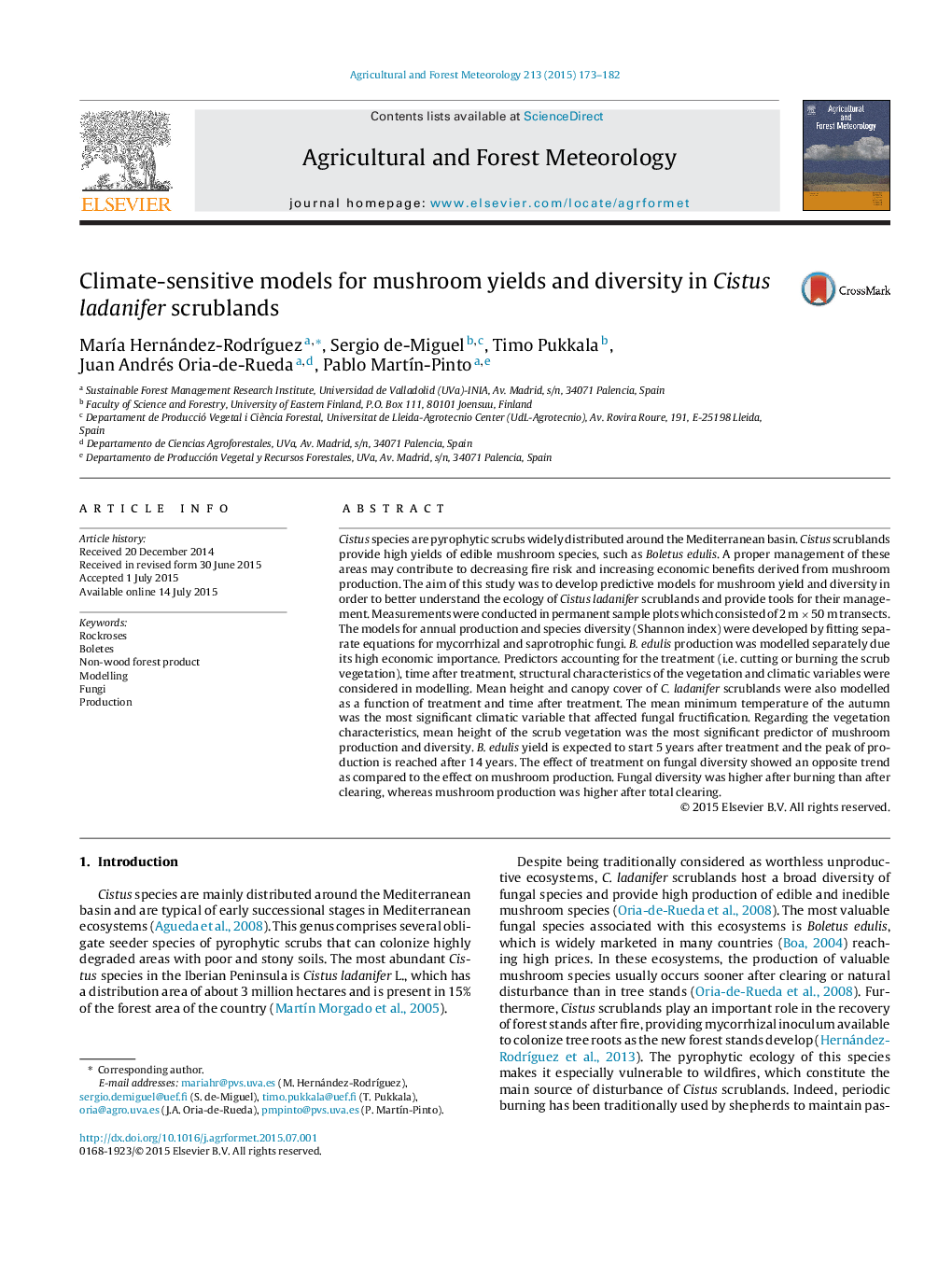| کد مقاله | کد نشریه | سال انتشار | مقاله انگلیسی | نسخه تمام متن |
|---|---|---|---|---|
| 81515 | 158320 | 2015 | 10 صفحه PDF | دانلود رایگان |

• We developed predictive climate-sensitive models for mushroom yield and diversity.
• Minimum temperatures of autumn were the most significant climatic variables.
• Clearing enhances mycorrhizal sporocarp yield while burning enhances diversity.
• The climate-sensitive models can be a useful tool for managing these ecosystems.
• The models may be further used in scenario analysis on the effect of climate change.
Cistus species are pyrophytic scrubs widely distributed around the Mediterranean basin. Cistus scrublands provide high yields of edible mushroom species, such as Boletus edulis. A proper management of these areas may contribute to decreasing fire risk and increasing economic benefits derived from mushroom production. The aim of this study was to develop predictive models for mushroom yield and diversity in order to better understand the ecology of Cistus ladanifer scrublands and provide tools for their management. Measurements were conducted in permanent sample plots which consisted of 2 m × 50 m transects. The models for annual production and species diversity (Shannon index) were developed by fitting separate equations for mycorrhizal and saprotrophic fungi. B. edulis production was modelled separately due its high economic importance. Predictors accounting for the treatment (i.e. cutting or burning the scrub vegetation), time after treatment, structural characteristics of the vegetation and climatic variables were considered in modelling. Mean height and canopy cover of C. ladanifer scrublands were also modelled as a function of treatment and time after treatment. The mean minimum temperature of the autumn was the most significant climatic variable that affected fungal fructification. Regarding the vegetation characteristics, mean height of the scrub vegetation was the most significant predictor of mushroom production and diversity. B. edulis yield is expected to start 5 years after treatment and the peak of production is reached after 14 years. The effect of treatment on fungal diversity showed an opposite trend as compared to the effect on mushroom production. Fungal diversity was higher after burning than after clearing, whereas mushroom production was higher after total clearing.
Journal: Agricultural and Forest Meteorology - Volume 213, November 2015, Pages 173–182